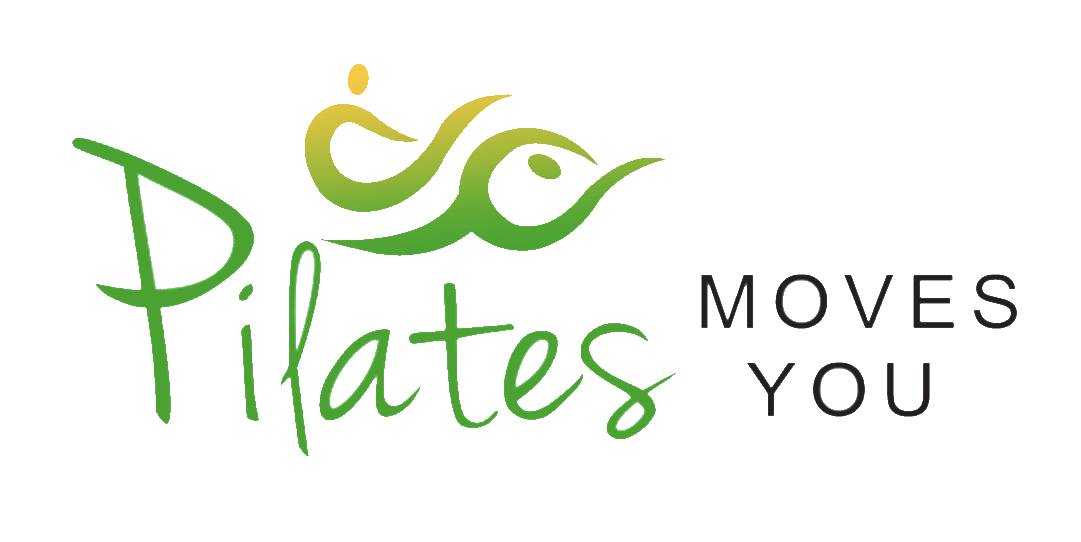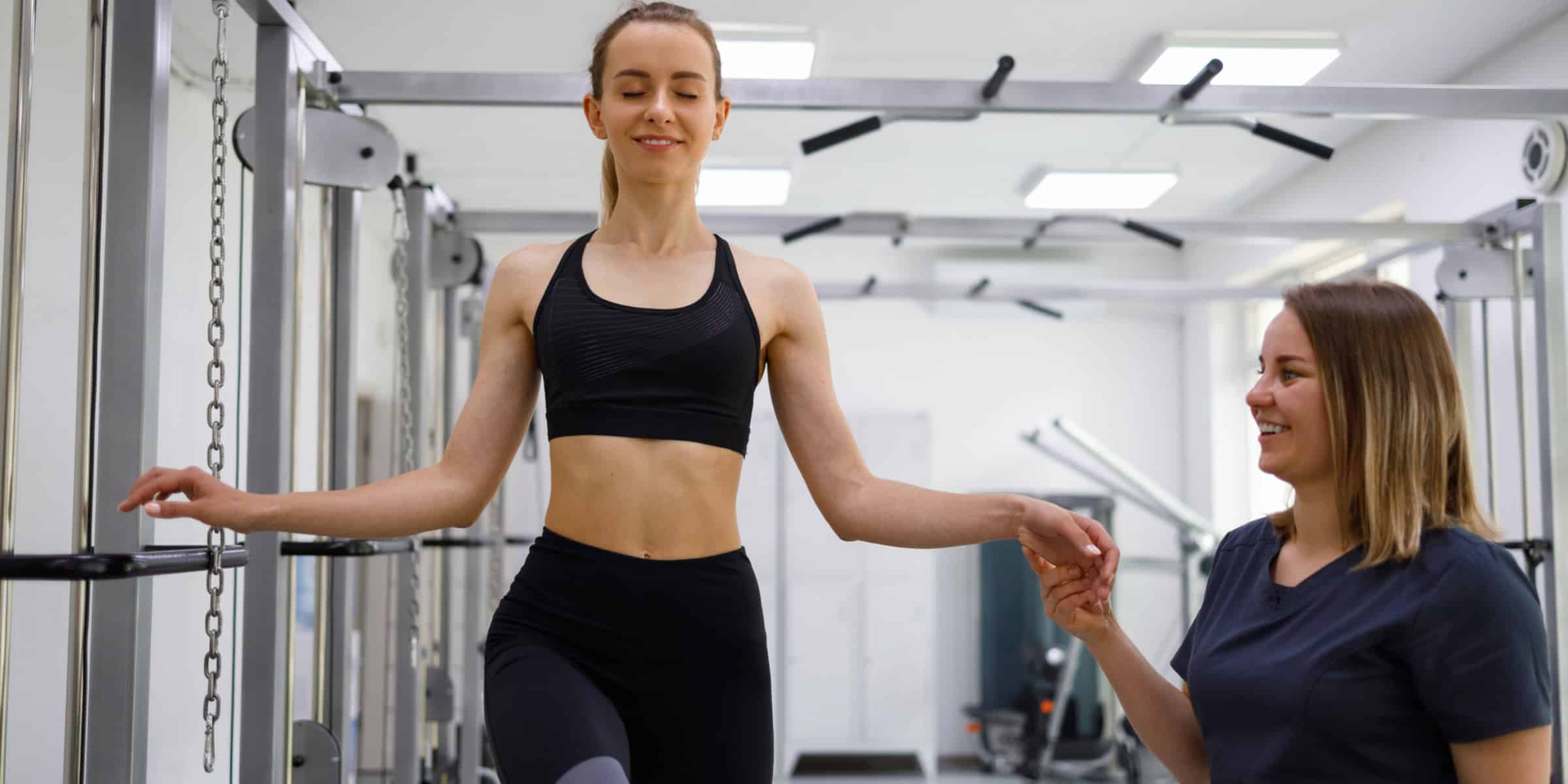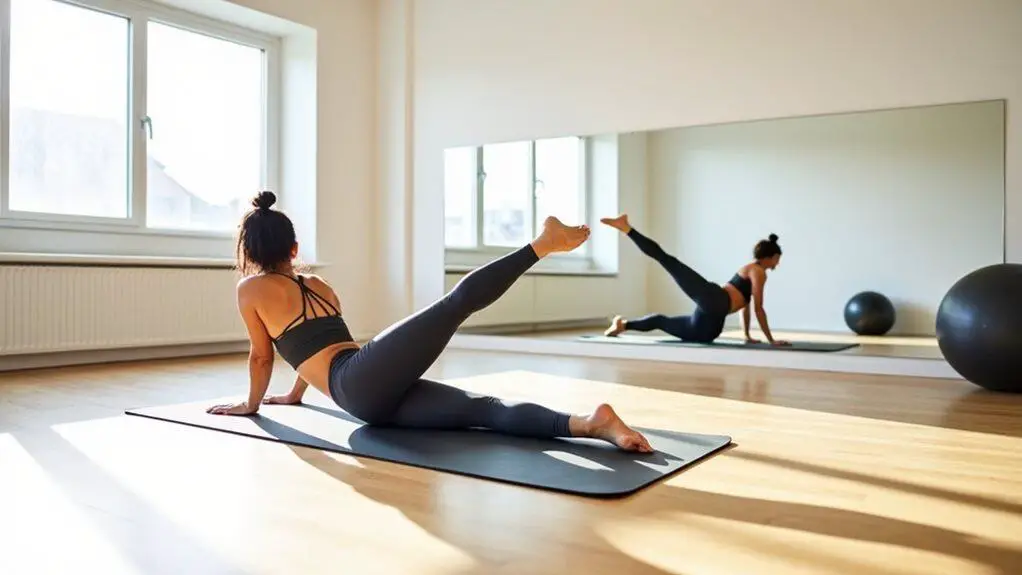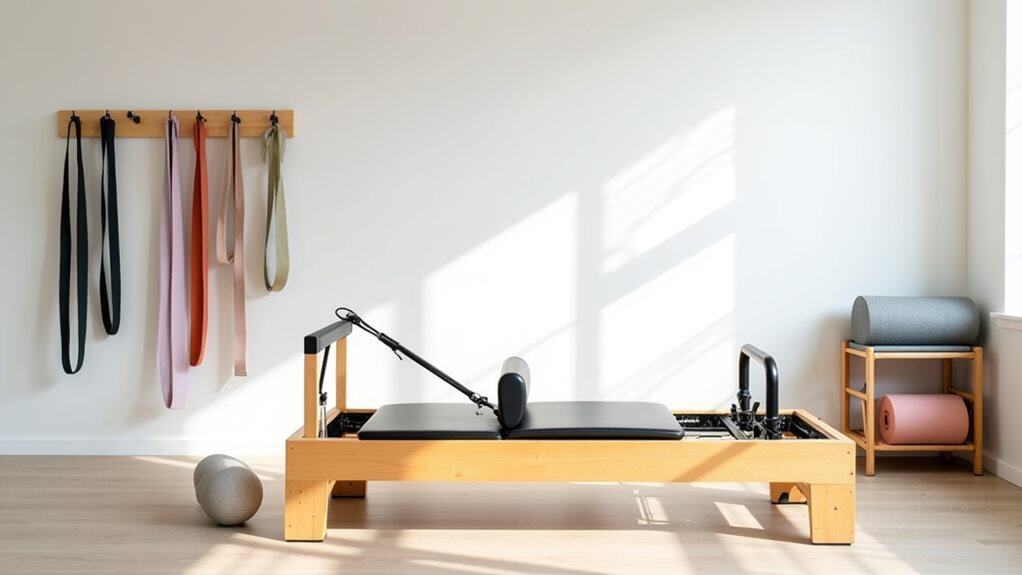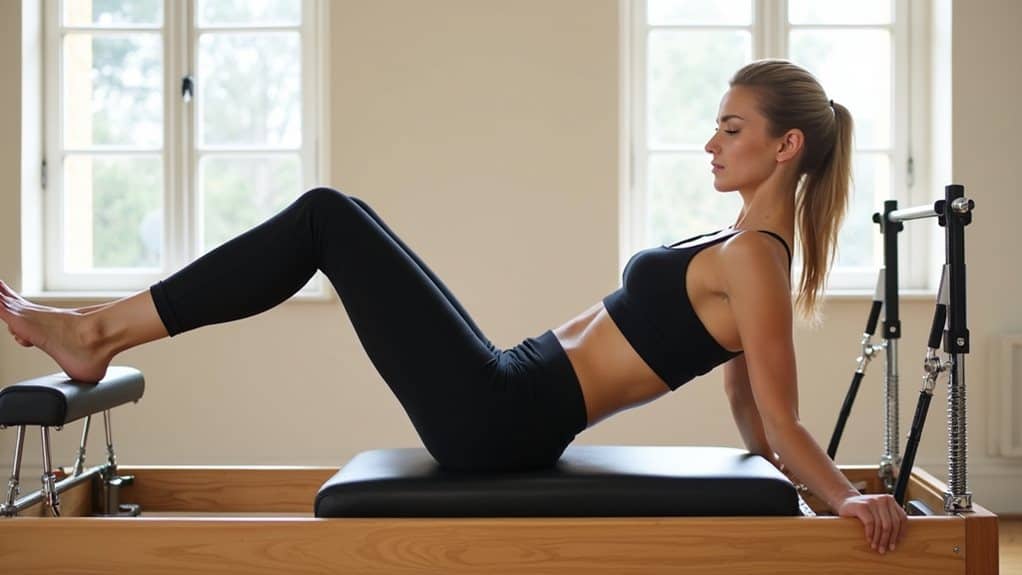Have you ever wondered how Pilates can help to improve coordination? Many people turn to Pilates as an exercise method to increase strength and flexibility, but it can also provide numerous benefits for improving coordination. But just how does Pilates do this?
Pilates improves coordination by focusing on precise and controlled movements that require the engagement of multiple muscle groups. By practicing Pilates regularly, individuals can improve their proprioception, which is the body’s ability to sense its position and movement in space. This increased awareness and control of the body can lead to improved coordination in various activities.
The exercises in Pilates often involve complex movements that require coordination between the muscles, joints, and the mind.
Pilates also helps to improve balance, which is an important component of coordination. By performing Pilates exercises that involve standing on one leg or using a balance board, individuals can learn how to maintain their center of gravity and control their movements while staying balanced. This increased stability in the body will help with activities such as walking, running, and playing sports.
With regular and consistent practice under the guidance of a qualified instructor, Pilates can significantly enhance coordination, leading to improved balance and overall physical coordination in daily life.
Whether it is in performing daily activities or engaging in other forms of physical activity, individuals who incorporate Pilates into their exercise program can experience the maximum benefit of improved coordination and quality of life.
With the focus on proper alignment, range of motion, and balanced muscle development, Pilates also serves as an effective method for injury prevention and maintaining proper physical coordination for a strong and healthy body.
What is Pilates?
Pilates is a unique, low-impact method of body conditioning originally developed by Joseph Pilates. Through a sequence of precise movements, typically on a mat or specialized equipment like a reformer, it focuses on core strength, body alignment, and muscular balance.
An example is the “hundred” exercise, engaging your abs while you pump your arms and breathe in a controlled rhythm.
Embrace Pilates to enhance your strength, flexibility, and overall body awareness without building bulk.
How Pilates Works
Pilates is a dynamic exercise regimen originally known as “Contrology,” meticulously designed to boost your coordination, balance, and overall physical wellness and regular practice provides the following benefits:
- Enhances Core Stability: Pilates strengthens your back, abs, and hips, improving your overall core stability.
- Builds Muscle Balance: Pilates can help achieve muscle balance as it works both the bigger and smaller muscles uniformly.
- Improves Posture: Regular Pilates can lead to improved posture, giving you an appearance of being taller and slimmer.
- Reduces Stress: Pilates incorporates deep breathing techniques, helping to relieve tension and stress.
- Low Impact Exercises: This exercise method being low impact, reduces the risk of injuries.
- Boosts Flexibility: Pilates enhances your flexibility, contributing to improved coordination and balance.
- Increases Body Awareness: It raises your body’s awareness, giving you greater control over your physical well-being.
- Mitigates Joint Pain: By aligning the body’s structure and supporting the joints, Pilates alleviates joint pain.
- Augments Daily Activities: Practising Pilates regularly leads to an improvement in functionality in daily activities, thanks to the development of wholesome movement patterns.
- Increases Oxygen Flow: Breathing techniques used in Pilates help increase oxygen flow throughout the body, enabling deeper relaxation during workouts. Remember, consistency is key in reaping the full benefits of this exercise form.
All this just from regular movement of your body, incredible, isn’t it?
The Role of Pilates in Improving Coordination
Pilates is a great way to improve coordination and balance. It utilizes precise movements that focus on core strength, body alignment, and muscle balance. Let’s take a closer look at it’s role in improving coordination.
1. Pilates Improves Body Awareness
Pilates helps you build enhanced proprioception, or body awareness, by consciously integrating breath and movement.
This deepens your understanding of bodily comfort, sensation and response to stimuli, hence improving coordination.
A common example seen in Pilates is the classic ‘Hundred’ exercise which increases core stability and mind-body synchronization.
Now, imagine the newfound grace, fluidity, and control you’ll experience in your daily life. From regular activities to complex sports, Pilates’ unique focus on body awareness can truly elevate your coordination skills. In no time, you might find yourself sharing a success story like Monica’s. Isn’t that an empowering thought?
2. Pilates Exercises Increase Core Strength and Stability
Pilates exercises are pivotal for boosting core strength and stability, leading to improved coordination. Regular practice can enhance physical balance and posture while delivering mental clarity.
Pilates engages your deep abdominal muscles, enhancing stability throughout your body. Consistent practice facilitates a stronger, more flexible core that moves freely, exhibiting improved coordination and control.
Try focusing on these key elements:
- Strengthening abdominals
- Conditioning spine muscles
- Engaging pelvic floor muscles
- Maintaining optimal breathing
- Enhancing flexibility and movement range
Investing daily time in these practices, you will efficiently develop strength and balance. Remember to select exercises compatible with your body type and mindful of any existing injuries. Enjoy a physically rewarding experience as Pilates brings harmony between mind, body, and movement.
3. Pilates Strengthens Dynamic Muscles
Dynamic muscles, the key to your body’s stability and control, play a vital role in every movement your body makes. From swift, athletic actions to simple daily tasks, coordination is immensely improved with stronger dynamic muscles. Now, picture this – Pilates, as your powerful ally, enhances these muscles anytime you practice.
Pilates methodically hones your dynamic muscles, ensuring they’re neither too weak nor overly rigid. Through a unique blend of strength training, it bolsters deep abdominal muscles and the pelvic floor, creating a supportive ‘brace’ for your organs and stabilizing your back.
Pilates challenges your balance, forcing your body to develop more nuanced control over movement. As you progress in Pilates, your techniques improve. Ultimately, it’s like a one-two punch: your muscles get stronger, and your coordination skill sharpens.
So, whether you’re a seasoned athleticism or a casual exerciser, Pilates can boost your overall coordination by strengthening dynamic muscles. Start your journey today!
4. Pilates Strengthens Stabilizing Muscles
Understanding the role of stabilizing muscles in coordination is crucial for a healthy, functional body. These true powerhouses not only support movement but help prevent injuries as well. Pilates, a comprehensive exercise method, specializes in working out these unsung heroes of your physique.
The magic of Pilates lies in targeting the deep abdominal muscles and your pelvic floor for both contraction and release. Think of these muscles as internal braces lifting and supporting your organs while providing back stability.
Ever wondered why a simple task as climbing stairs or carrying groceries can sometimes put your back out of whack? Pilates prevents such occurrences by promoting proper posture and alignment, ensuring your body moves as one harmonious unit. Regular practice can make notable improvements in your stability, balance, and, most importantly, coordination.
5. Pilates Improves Balance and Posture
Pilates is a highly effective form of exercise that not only strengthens the body but also improves balance and posture. One of the main reasons for this is the emphasis on proper alignment and form during Pilates exercises.
By focusing on correct alignment, individuals develop an awareness of their body’s position in space and learn to engage the muscles needed to maintain optimal posture. This is crucial for balance, as maintaining a stable and aligned body position is essential for preventing falls and enhancing overall stability.
Specific Pilates exercises target the muscles responsible for maintaining good posture. The hundred exercise, which involves pumping the arms while keeping the core engaged, helps strengthen the abdominal muscles, ultimately supporting the spine and improving postural alignment. The roll up exercise, roll over, single leg circles, and open-leg rocker also work to improve core strength and spinal alignment, contributing to better posture.
Maintaining good posture throughout daily activities has numerous benefits. It reduces strain on the spine, alleviates muscle tension, and helps prevent injuries. Additionally, proper alignment promotes efficient movement patterns and enhances overall body coordination.
Incorporating Pilates into your exercise routine can significantly improve balance and posture, leading to better overall physical health. It is important to practice under the guidance of a qualified instructor to ensure proper alignment and form. With consistent practice, Pilates can greatly enhance your body’s coordination, balance, and posture for a better quality of life.
6. Pilates Increases Coordination and Dexterity
Pilates offers a fantastic route toward enhanced coordination and dexterity. By engaging in such exercises, you, like many others, can significantly boost abilities across balance, control, and smooth transitions between movements. Here are ten ways that practicing Pilates can help improve your balance:
- It bolsters posture, which inherently improves balance.
- It enhances your awareness of your body, fostering more efficient movement.
- It strengthens core muscles essential for stability.
- It increases the connection between your body parts, encouraging coordinated movement.
- It reinforces integrated muscle use, honing advanced coordination.
- It fosters better breathing techniques impacting balance positively.
- It promotes mental focus which contributes to bodily control.
- It cultivates endurance which also affects balance favorably.
- It encourages mindful transitions between exercises, enhancing stability.
- The repeated practice builds the body-mind connection, refining balance and coordination.
Discover the transformative power of Pilates, embarking on a journey toward improved coordination and balance.
7. Pilates Helps Eliminate Imbalances
Struggling with body imbalances? It’s a common issue where overdeveloped muscles compensate for weaker ones, leading to impaired coordination. But don’t fret – Pilates can help! Through targeted exercises, Pilates addresses this by balancing body strength, mobilizing rigid parts and lengthening tightness. Gradually, you’ll feel improved control in your movements as balance is restored.
Start by focusing on feeling your feet firmly connected to the ground – this helps with balance support. Remember to breathe correctly, as it enhances body awareness.
Add slow-warm-ups and cool-down twists to increase mobility. Invariably, by strengthening your core with Pilates, you’ll eliminate imbalances, enabling you to lead an active life with improved coordination.
8. Pilates Improves Posture and Alignment
When you pay heed to your posture and alignment, major transformations can happen. Engage with Pilates, an answer to achieving improved posture, balance, and coordination. Here’s how:
- Pilates boosts your awareness of your body’s alignment, fortifying usually ignored postural muscles (6, 7). Rather than slouching, stand tall with this renewed consciousness.
- Exercises such as the hundred, roll up, roll over, single-leg circles, and open-leg rocker not only enhance your core muscles but also promote good posture.
- By focusing on movements linked to your breath during Pilates, you usher in mental clarity, enhancing your understanding of your body’s movements.
- Pilates ensures your entire body is aligned right, effectively improving your posture. Practiced regularly, it assures maintained good posture and alignment along with enhanced coordination. Remember, attention to daily movements with these practices in mind often leads to major improvements.
9. Pilates Reduces Muscle Tension and Stress
Experience the harmony of a mindful body and a relaxed mind with Pilates. This low-impact exercise not only strengthens your muscles but also releases tension, reducing stress, and enhancing coordination.
- Pilates focuses on breath-work, aligning your movements with each inhale and exhale. This rhythmic, conscious breathing activates “rest and digest” mode, lowering cortisol, and easing stress.
- By encouraging balanced muscle tone rather than imbalance-induced tightness, Pilates relinquishes tension, allowing for increased mobility.
- Dynamic strength development through Pilates supports joint stability as you move, enhancing coordination and reducing injury risk.
- Practice control through mastering Pilates movements to foster precision, improving your overall coordination.
Pilates brings notable changes to your everyday movements, making you more mindful, relaxed, and coordinated.
10. Pilates Enhances Mind-Body Connection
Understanding Pilates involves recognizing its powerful role in strengthening the mind-body connection. This century-old practice enhances body awareness and promotes improved coordination.
Pilates, a low-impact form of exercise, heightens proprioception, your conscious perception of the movement and spatial orientation arising from stimuli within the body.
By fostering internal focus and utilization of breath, Pilates can lead to improved cognitive functioning, stress reduction, and better body responsiveness.
For example, mastering Pilates can help prevent overeating by promoting better attunement to the body’s hunger signals.
With regular practice, Pilates can empower you not only to move with grace but also to live more mindfully.
Final Thoughts
In conclusion, Pilates is a great way to improve coordination and reduce stress. It has multiple benefits including improved mental health, increased fitness level, and stronger core muscles.
Its wide range of Mat exercises helps to address muscle imbalances and tight muscles while also strengthening larger muscles for improved balance.
With regular practice, you can achieve better coordination and physical well-being.
